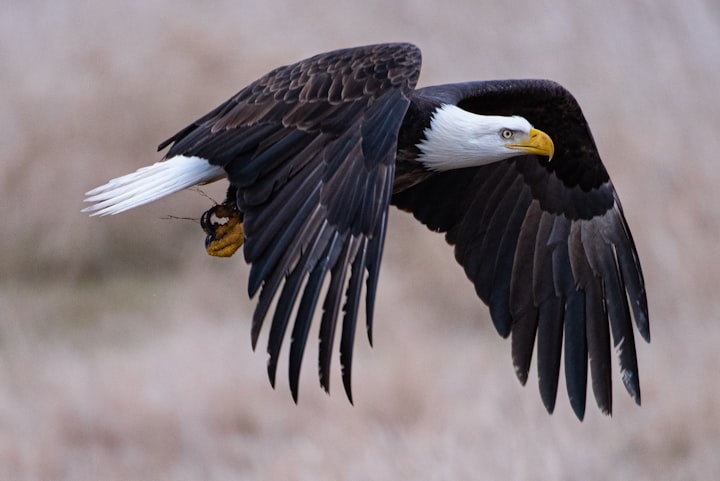Just What is Killing America’s Bald Eagles?
Herbicides could be the key to mad eagle disease

The bald eagle is an iconic bird synonymous with the USA. Since 1994 bald eagles living by mainly artificial lakes have been developing a brain disease that sees them losing control of their co-ordination and dying. The deaths have perplexed ecologists and other scientists for years. The disease was somewhat similar to ‘mad cow disease’ in humans and this led scientists to believe that the disease may be due to something in the food chain that finished with the bald eagle.
The birds suffering with the disease, which is called vacuolar myelinopathy, lose their ability to control their flight and exhibit unusual behaviours. Some of the eagles crash into the side of cliffs, find it impossible to catch prey snd starve and lose the ability to coordinate their muscles.

Around two hundred bald eagles have died due to the disease since the first cases were reported in Arkansas in 1994.
Water-thyme and the blue green algae that grows on it became a prime suspect for the source of the toxin thought to be causing this type of ‘mad eagle’ disease.

The blue green algae, a type of cyanobacteria, is known to produce toxins that affects and in some cases kills other wildlife. Bald eagles do not eat the water-thyme and the blue green algae that covers it but do eat fish and water birds that feed directly on it. It was observed that fish and birds that ate it often became weak and sickly and this pointed to a possible link to the eagles that ate them becoming ill.
Toxins become more concentrated as they pass up the food chain and the bald eagle sits right at the top of the food chain having no natural predators.
Samples of the cyanobacteria were sent to the University of Georgia for genetic sequencing. Once the DNA had been sequenced it became clear that this was a new species of cyanobacteria and it was given the name Aetokthonos hydrillicola. When translated into English this is a very literal name as it means ‘eagle killer living on water-thyme’. Although calling it this the scientists at Georgia University could not find any toxin in the algae and this meant that the investigating team had to think again as to what might be causing the eagles to die.
The breakthrough came when samples of the cyanobacteria were sent for further testing to the Martin-Luther-University Halle-Wittenberg in Germany. Here a team led by Timo Niedermeyer undertook some advanced and specialised mass spectrometry on the samples of algae sent from Georgia. They were surprised to find a high concentration of bromine in the cells of the algae.
It appears that water-thyme thrives on bromine and takes up the bromine from the lake water it lives in. This bromine is then passed into the algae that lives on the water-thyme which is then passed into the bodies of fish and birds that eat the water-thyme and algae and finally into the bodies of bald eagles that eat the fish and birds.
The scientists found that it was bromine poisoning that was leading to the disease and death of the bald eagles.
Bromine does not naturally occur in such great concentration in lake water and now the hunt is on to find the source of the contamination. As with many similar cases of water pollution a chief suspect is herbicide poisoning either directly applied by water managers to the banks of the lakes to control weeds or in water run off from surrounding agricultural or forestry land.
Until the source is identified more and more of the majestic bald eagles are set to die.
Scientists continue to investigate and should they discover that it is a herbicide causing the bald eagle deaths then the battle to ban it will start and most probably include a visit to the courts.
About the Creator
Paul Conneally
Paul Conneally is a Cultural Forager, poet and artist.
He writes on culture in its widest sense from art to politics, music and science and all points between.
His Twitter handle is @littleonion and on Instagram he is @little___onion






Comments
There are no comments for this story
Be the first to respond and start the conversation.